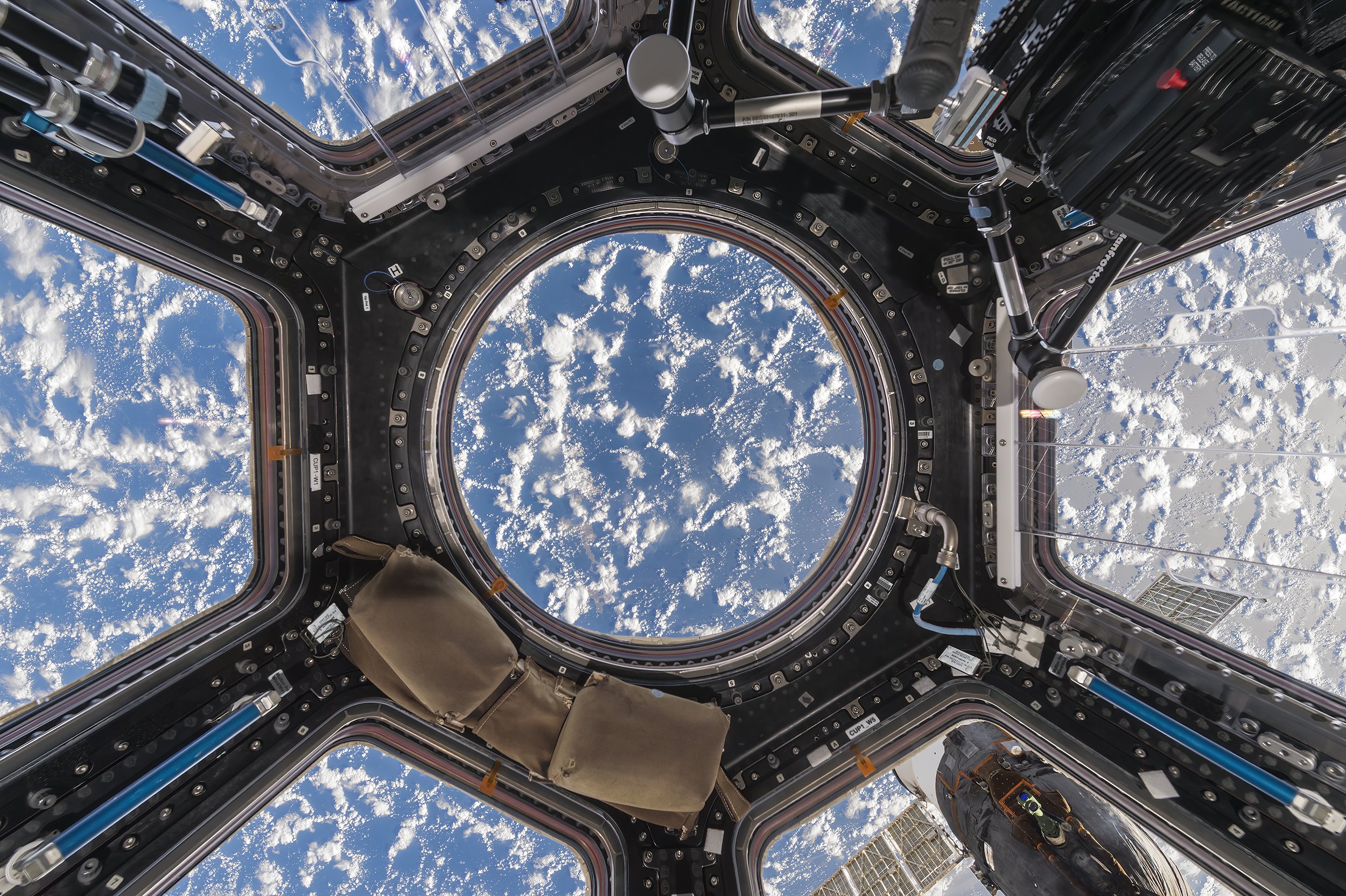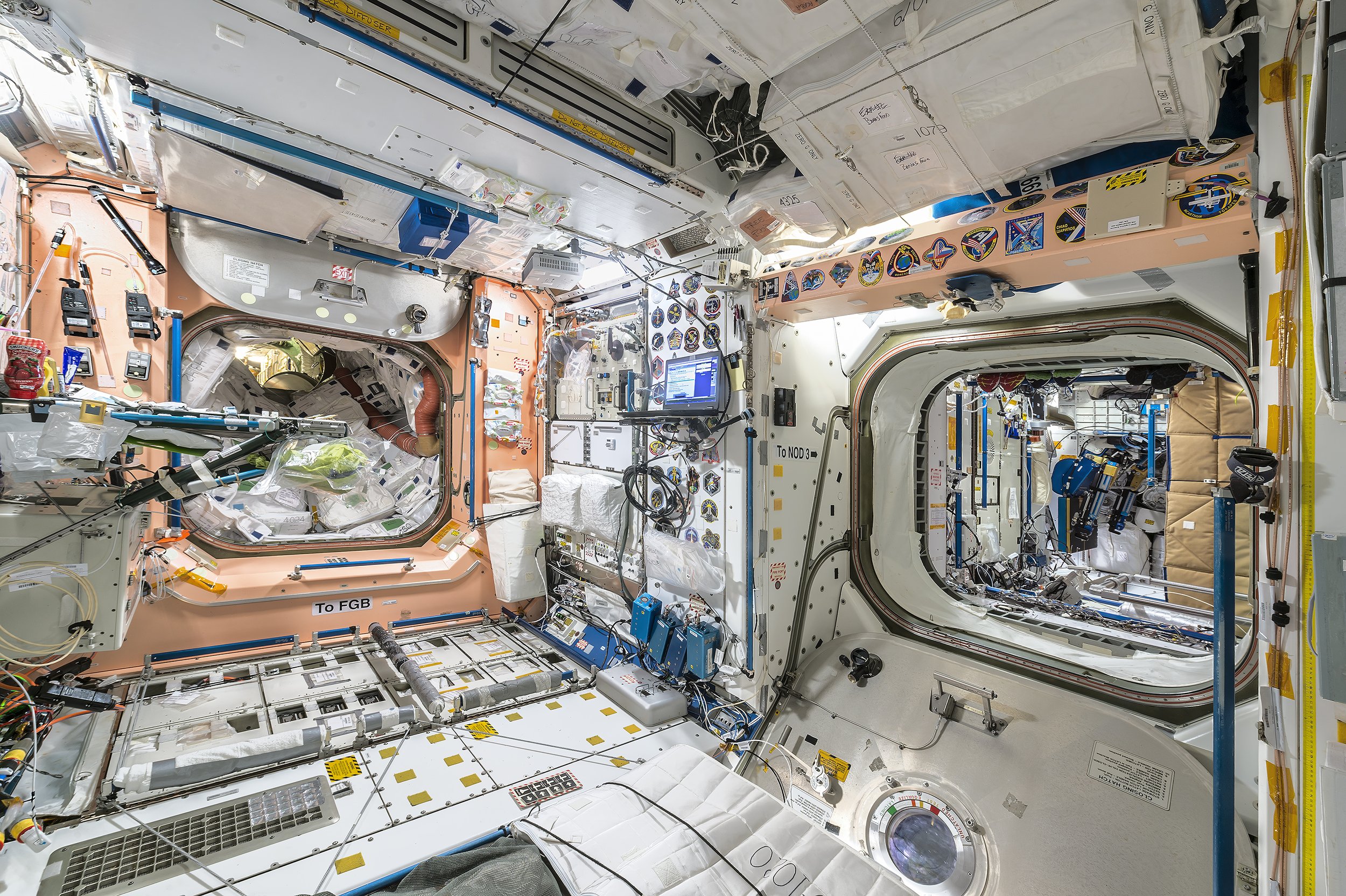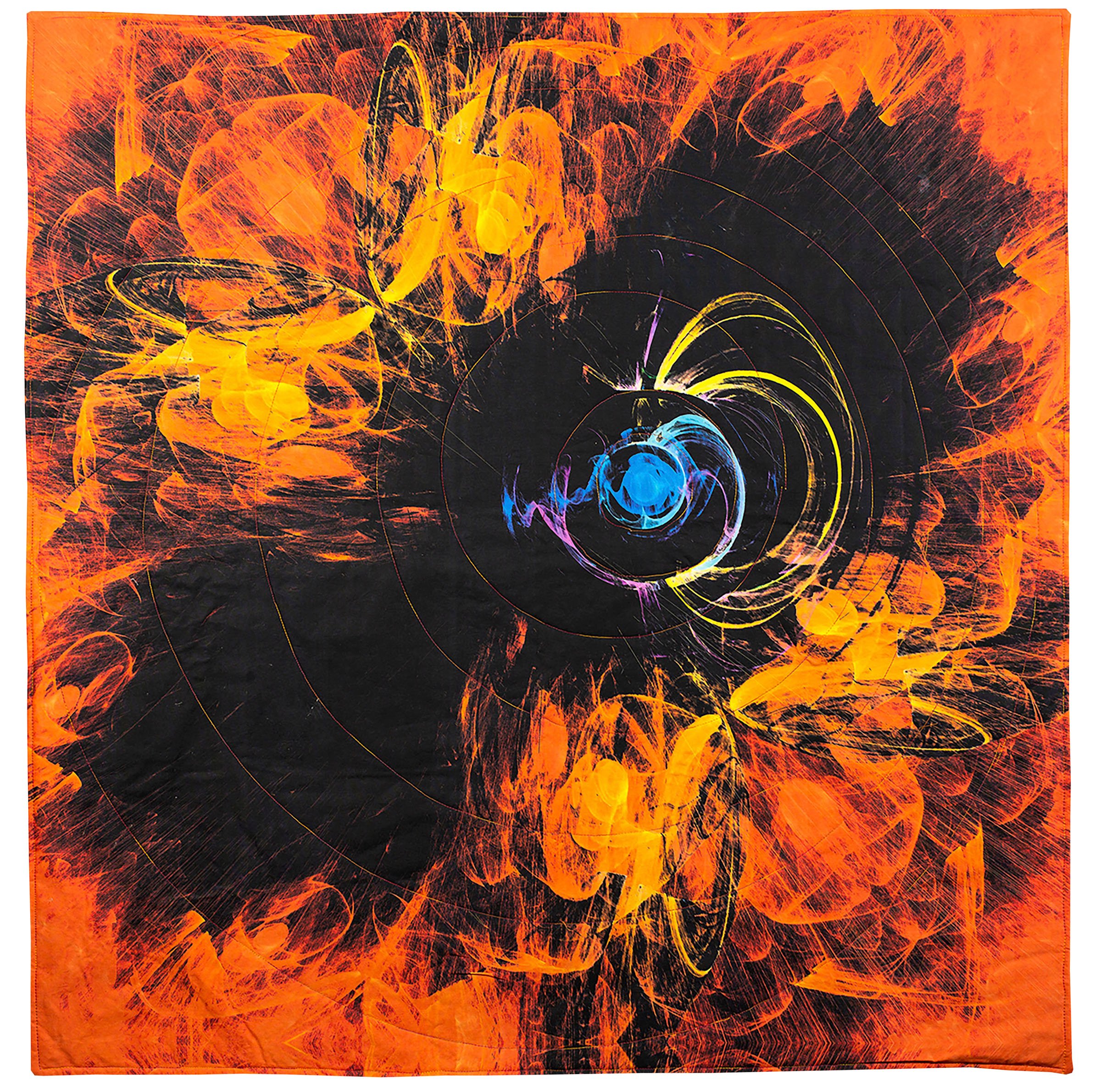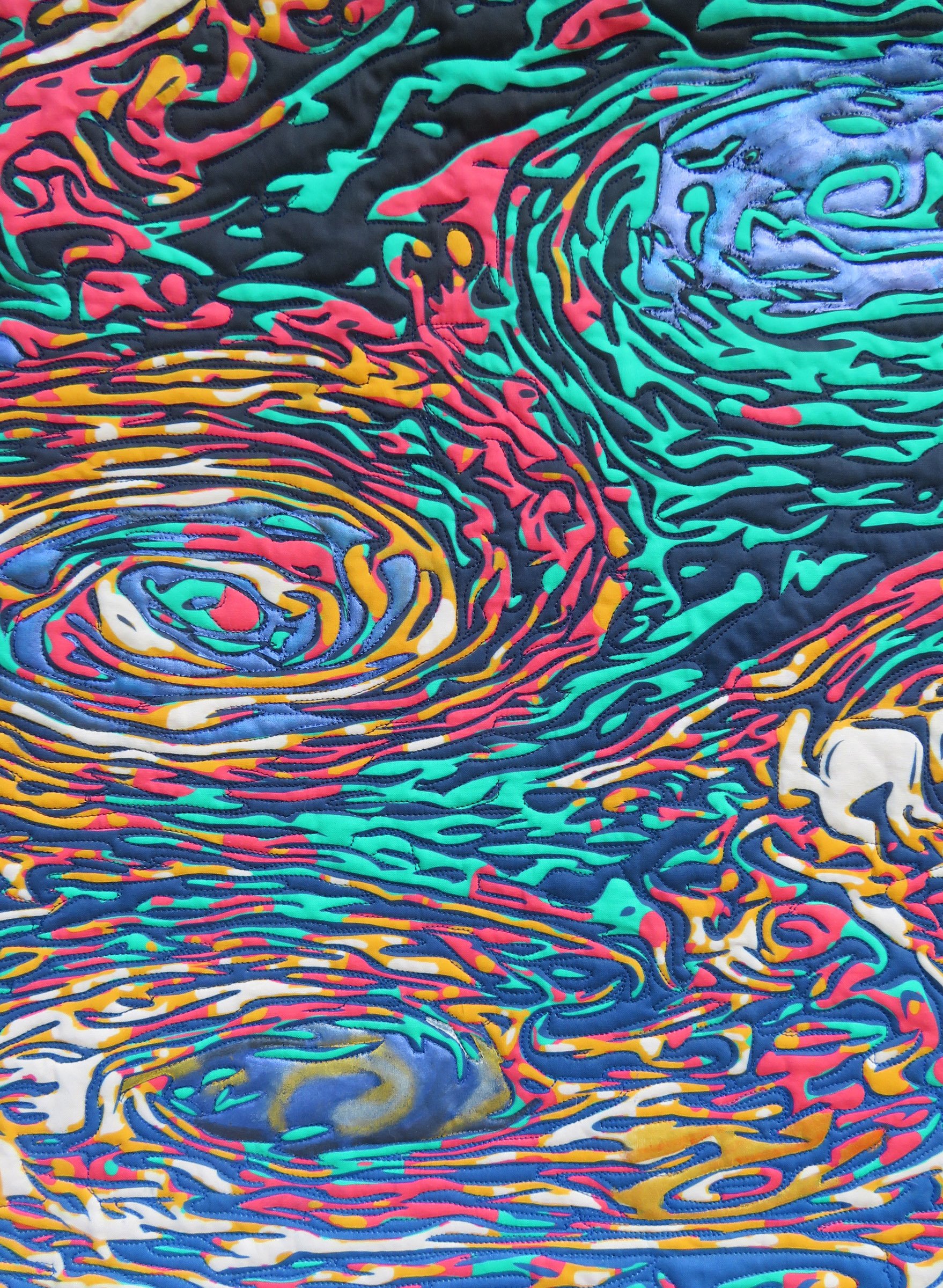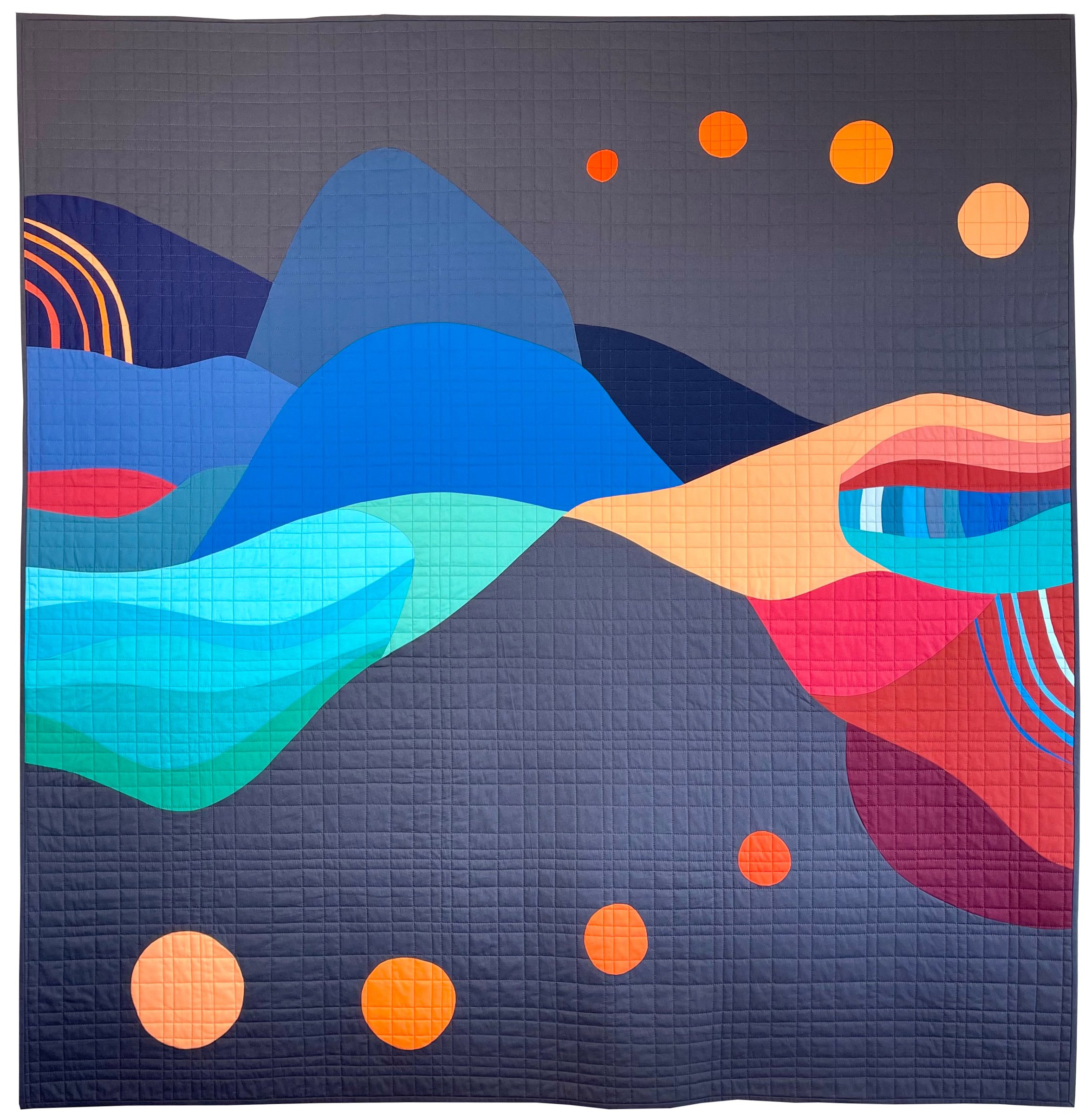The LSU Museum of Art opens exhibitions Fierce Planets: Work from the Studio Art Quilt Associates, and Interior Space: Photographs by Roland Miller & Paolo Nespoli in April 2024.
Baton Rouge, LA–This spring and summer, the LSU Museum of Art is going to space! We will feature two concurrent exhibitions themed around the cosmos: Fierce Planets: Work from the Studio Art Quilt Associates, and Interior Space: Photographs by Roland Miller & Paolo Nespoli.
Interior Space: Photographs by Roland Miller & Paolo Nespoli
On view April 8–July 28, 2024 at the LSU Museum of Art
During a project documenting the Space Shuttle program in 1998, Miller was able to shoot several sections of the International Space Station (ISS) while they were being produced in the Space Station Processing Facility at the Kennedy Space Center in Florida. Fascinated with the complex structure that would soon be orbiting the Earth, he returned over the next several years, continuing to capture images of additional modules. In 2014, he had a fateful meeting with astronaut Dr. Cady Coleman, who challenged Miller to devise a method to photograph the ISS from the viewpoint of those serving on board. Together with Italian astronaut, Paolo Nespoli, who was an ISS resident, Miller developed a system where Nespoli used a digital camera tethered to a laptop to transmit the images to Earth. Miller then instructed the astronaut to frame specific areas in the composition and guided the process of lighting and exposure. After a period of intense experimentation, research, and trial and error, Miller and Nespoli refined the method and successfully and artfully documented the ISS.
The exhibition Interior Space will include a selection of the photographs captured during the project. The show has an accompanying book, Interior Space: A Visual Exploration of the International Space Station, by Roland Miller and Paolo Nespoli.
Fierce Planets: Work from the Studio Art Quilt Associates
on view April 18–July 28, 2024 at the LSU Museum of Art
The juried exhibition Fierce Planets features fiber art inspired by the work of Dr. Sabine Stanley, the Bloomberg Distinguished Professor at Johns Hopkins University in the Department of Earth and Planetary Sciences and the Space Exploration Sector of the Applied Physics Lab, and author of the book, What’s Hidden Inside Planets. Responding to a call from the Studio Art Quilt Associates, Inc. (SAQA), artists from across the globe designed forty-two intricate objects inspired by planets and space. Their interpretations vary wildly, and include traditional quilts, fabric assemblages, and soft sculptures made using a variety of materials and techniques. Objects and artifacts from LSU’s Department of Physics and Astronomy and Geology and Geophysics, including a tile from a Space Shuttle and meteorites, will accompany the artwork, allowing the viewer to glean a deeper appreciation and knowledge of space and the formation of planets.
To complement the exhibition, Associate Professor Loren Schwerd from LSU’s College of Art and Design, has integrated a site-specific project into her spring coursework. Students will design and install a sculpture inspired by the cosmos and the Fierce Planets theme. The work will be on view in the adjoining gallery for the length of the exhibition.
Fierce Planets was designed and coordinated by Studio Art Quilt Associates, Inc., in partnership with Johns Hopkins University. The LSU Museum of Art is the premiere venue, with the exhibition expected to travel nationally and internationally over the next several years.
EXHIBITION PROGRAMMING
Visit LSU Museum of Art’s Facebook and Instagram pages @lsumoa regularly for program announcements and exhibition updates.
ABOUT LSU MUSEUM OF ART
LSU Museum of Art is supported by a grant from the Louisiana Division of the Arts, Office of Cultural Development, Department of Culture, Recreation & Tourism, in cooperation with the Louisiana State Arts Council. LSU Museum of Art is supported in part by a grant from the Arts Council of Greater Baton Rouge, funded by the East Baton Rouge Parish Mayor-President & Metro Council. Funded in part by a grant from South Arts in partnership with the National Endowment for the Arts. Funding for the 2023 Emergency Planning Grant has been provided by the State of Louisiana and administered by the Louisiana Endowment for the Humanities. Additional support is provided by generous donors to the LSU Museum of Art Annual Exhibition Fund. Free admission for Toddler Thursday is sponsored by the Junior League of Baton Rouge. Generous support provided by Art Bridges Foundation’s Access for All program.
VISITOR INFORMATION
The museum is located in downtown Baton Rouge at 100 Lafayette Street on the Fifth Floor of the Shaw Center for the Arts. General admission is $5 each for adults and children age 13 and over. Admission is free to university faculty and students with ID, children age 12 and under, and museum members. Active-duty military and veterans, first responders, and their families receive free admission with ID as part of the Blue Star Museums program. Show your EBT card and photo ID at the admissions desk and receive free admission for up to 4 individuals as part of the Museums for All initiative. Museum Hours of operation are Tuesday through Saturday, 10 a.m.-5 p.m.; Thursday and Friday, 10 a.m.-8 p.m.; Sunday 1-5 p.m.; and closed on Mondays and major holidays. Free admission occurs on the first Sunday of each month and every Friday night from 5-8 p.m. For more information: visit www.lsumoa.org, call 225-389-7200, and follow the museum on social media @lsumoa for exhibition and program updates.
About Studio Art Quilt Associates, Inc.:
Studio Art Quilt Associates, Inc. (SAQA), is a nonprofit organization whose mission is to promote the art quilt: "a creative visual work that is layered and stitched or that references this form of stitched layered structure." Our vision is that the art quilt is universally respected as a fine art medium. SAQA’s core values are: excellence, innovation, integrity, and inclusion. Over the past thirty years, SAQA has grown into a dynamic and active community of over 4,000 artists, curators, collectors, and art professionals located around the world. With our exhibitions, resources, publications, and membership opportunities, we seek to increase the public's appreciation for the art quilt and to support our members in their artistic and professional growth.
About the jurors:
Dr. Sabine Stanley is a Bloomberg Distinguished Professor at Johns Hopkins University in the Department of Earth and Planetary Sciences and the Space Exploration Sector of the Applied Physics Lab (APL). She directs the Magnetism and Planetary Interiors (MagPI) research group at Hopkins, which is centered on understanding planetary interior processes and evolution. This includes investigating magnetic field generation, which provides important information about the thermal history of a planet, its interior structure, and the fluid motions occurring in the core.
Dr. Stanley received her B.S. degree in Physics and Astronomy from the University of Toronto, and M.A. and Ph.D. degrees in Geophysics from Harvard University. Prior to joining Johns Hopkins, she was a Postdoctoral Researcher at MIT from 2004–2005 and a Professor at the University of Toronto from 2005–2017. She has received the William Gilbert Award of the American Geophysical Union, and a Sloan Research Fellowship, among other distinctions and honors.
J.D. Talasek, Director, Cultural Programs of the National Academy of Sciences, is the creator and moderator for the monthly salon DASER (DC Art Science Evening Rendezvous) held at the NAS, part of the LASER network. He has served on the faculty at Johns Hopkins University in the Museum Studies Master’s Program, and on the Contemporary Art and Science Committee (CASC) at the Smithsonian’s National Museum of Natural History. He is the art advisor for Issues in Science and Technology Magazine and was the Art and Design Advisor for the National Academies Keck Futures Initiative based in Irvine, CA from 2015–2017. Talasek has served as a board member of Leonardo/ International Society for Art Science and Technology, and chaired the LASER committee that coordinates more than forty art/sci salons around the world.
Talasek has curated several exhibitions at the National Academy of Sciences including Imagining Deep Time, Visionary Anatomies (toured through the Smithsonian Institution, 2004–2006), Absorption + Transmission: Work by Mike and Doug Starn, The Tao of Physics: Photographs by Arthur Tress, and Cycloids: Paintings by Michael Schultheis.
Dr. Denis Wirtz, vice provost for research; Professor of Engineering Science; director of the Physical Sciences-Oncology Center (PSOC); co-founder of the Institute for NanoBioTechnology; researcher and inventor; at Johns Hopkins University.
Dr. Wirtz is a globally-recognized and consulted expert in cell motility and nuclear dynamics in health and disease. He is known for his innovative vision and galvanizing energy. As vice provost for research at the nation’s first research university, Dr. Wirtz focuses on the current and future health of the university’s research enterprise, including institutional research compliance, research development, and cross-divisional research initiatives. He and his team support a 6,000-member research community that includes Nobel laureates, MacArthur fellows, Sloan fellows and other luminaries. He supports vital multidisciplinary, collaborative research programs, including the Bloomberg Distinguished Professorships.
With a Hoover Fellowship from the Belgian American Educational Foundation (BAEF), Dr. Wirtz earned an M.S. and PhD in Chemical Engineering from Stanford University. He was also granted a fellowship through the European Union’s Human Capital and Mobility program to conduct postdoctoral research at the Ecole Supérieure de Physique et Chimie Industrielles (ESPCI) in Paris, France. He is a foreign member of the Belgian Royal Academy of Medicine (ARMB) and a fellow of the American Institute for Medical and Biological Engineering, the American Association for the Advancement of Science (AAAS), the American Physical Society and the American Institute for Medical and Biological Engineering. He is a past recipient of the National Science Foundation’s CAREER Award and the Whitaker Foundation Biomedical Engineering Foundation Award.
####

